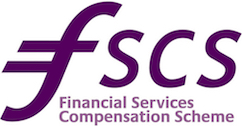Month 1 – How to perform a quick and simple money health check.
It’s the middle of July as I write this article and I can’t believe we are over half way through 2020 already. For me that means it’s time to carry out my 6 monthly money health check. It’s something I’ve been doing for years and, although it takes me a few minutes, it helps me make sure my money is working hard but also helps me feel in control of my finances. Working in the financial services industry for over 35 years has meant that I’ve become a bit of a ‘sounding board’ for my friends and family when it comes to financial matters. Over the coming months, I’m going to be sharing some of the common questions I get asked and my answers to them.
Today’s question was a relatively simple one from my soon to be retired cousin who asked: “I’m retiring in 3 months time and given everything that is happening in the world at the moment I don’t want to spend lots of time worrying about money to get the best returns so please give me some sensible ideas about how to understand my money “
This was opportune as falling interest rates have prompted me to review my own savings accounts as the interest rate on my Santander 123 account has fallen from 1.5% p.a. at the start of 2020 to just 0.6% from 3rd August which, after the £5 per month fee, cuts the effective rate to 0.3% or below. As I am reviewing my savings and investments, I thought it would be useful to share my 5 Easy Steps for carrying out a Money health check.
Step 1: Make a list of your savings and investments
I’m a fan of Excel and use this to keep a check of what I have.
Make a list of all your savings and investments, you will need copies of your statements and would typically include the following information:
- Name of provider
- Name of account/plan/product
- Latest Value
- Date of latest value
- Previous value (this could be last year or another date)
- Date of previous value
- Contributions (in/out) since previous value date
- Return for the period (you should be able to find this on your statement)
Step 2: What are your savings goals?
You might have a number of different goals for your savings, for example:
- Cash accounts with emergency money
- Short / medium term savings, for example for a holiday, car or big purchase
- House purchase
- Saving for retirement
- Investing a lump sum
Depending on what your goal is and the timescale over which you have to meet it, different solutions may be appropriate. For example, emergency rainy day money will most probably be in instant access savings so you can access it easily. You will not want to take much risk with this savings pot so you know the money will be there if needed and should not fall in value.
Regular savings where your goals are three or more years in the future, or lump sums that you want to invest for the longer term, can work harder for you if you are prepared to take some investment risk. Metfriendly’s with profit savings and investment plans allow you to balance safety with returns by investing on your behalf in a diversified portfolio of assets.
Step 3: How are your investments performing against your benchmarks?
Your statements should give you some performance information either over the time since the last statement or since the start.
Look at how each plan is doing taking into account the risk you are taking and your savings goal. Some questions to ask:
- Do your savings look like they are on track?
- Are they performing well against an industry benchmark?
- Are there any promotional bonuses available to help them grow?
- Are there any guaranteed bonuses in regular savings?
- If not do you know why?
- Market movements following the Covid 19 pandemic may mean some plans have fallen in value. If you don’t need to sell, then this may not be a problem. What matters is the price that you sell at compared with the cost you bought at.
- If savings are not on track due to low cash rates, you might want to switch to something with a better rate bearing in mind the level of risk you are prepared to take to achieve a better return
- Can you save more to reach your goals sooner? Consider if you can afford to increase (or reduce) your regular savings.
- Do you have a lump sum to spend or invest? If so, look at what is available in the market, look at what promotional bonuses are available and how long they last
Step 4: Are your investments protected?
The Financial Services Compensation scheme covers most savings and investments. There are a number of different sub schemes including the Deposit Scheme which protects bank, building society and credit union deposits up to £85,000 per person per company, so if you have more than this with one provider, you might want to consider using more than one provider. Metfriendly’s policies are protected by the Insurance Scheme which has unlimited protection for life policies so if you have £10,000 or £500,000 it is fully protected. This means it could be a good idea to put all your investments in one place to simplify the number of providers you have your savings and investments with.
Step 5: Work out your action plan
Once you’ve worked through the four steps work out an action plan. Decide what changes you want to make and when you need to make them. Write it down your actions and dates to complete them by. Your final action on your plan should be to set a date for the next review. I usually do mine every 6 months, but you might want to do this more or less frequently to tie in with your savings goals. Put that next review date in your diary now so that you remember to do it
Kathy Byrne, CEO Metfriendly
If you’d like to speak to us about the products and services we offer, leave your details here and we’ll arrange for someone to call you back at a time convenient for you.
Alternatively if you would like to talk to us in more detail about your financial circumstances, you can book a one-to-one consultation.










